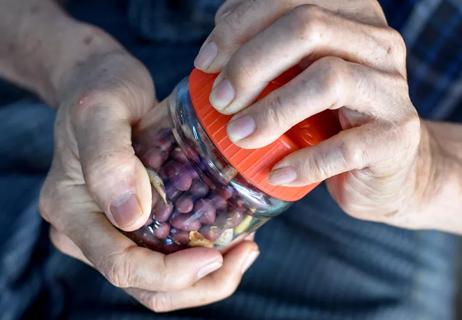People who are frail have a higher risk of complications

Contributor: Ronan Factor, MD
Advertisement
Cleveland Clinic is a non-profit academic medical center. Advertising on our site helps support our mission. We do not endorse non-Cleveland Clinic products or services. Policy
Age no longer is the absolute barrier to undergoing surgery in the United States. As the population gets older and the number of older adults increases, more people require interventions for a number of health concerns. This can include procedures such as heart valve replacement surgery, hernia repair, cataract removal or joint replacement.
Internal medicine physicians and family practitioners are well-versed in “clearing” patients for surgery. This evaluation essentially determines the risk of adverse cardiovascular events and communicates the risk to the surgeon. The evaluation also would take into account factors such as pulmonary risks in people with chronic lung disease and risk of bleeding or blood clots for people who are taking blood thinners.
Determining risk is more pertinent in elective or planned surgeries, because there is time to implement an intervention for people who are at higher risk for complications. Such interventions may include stress tests for people who may have symptoms of uncontrolled or unmanaged coronary artery disease.
On the other hand, in emergency situations, determining risk often is secondary when surgery must be done to save a life. The risks remain, though, despite the urgency or need to immediately go to the operating room.
Advertisement
Recently, functional status has been increasingly predictive of how older adults do after surgery. People who are more functionally independent — meaning able to do daily living activities independently— usually are more physically and cognitively intact. Those with more limitations are usually more physically and/or cognitively impaired.
This functional status is a good marker of overall fitness for surgery, as it reflects the impact of aging along with a person’s medical problems.
Years ago, geriatrician Linda Fried, MD, developed the “frailty phenotype” as a way to characterize and measure this concept. The term frail often is used to refer to adults who are older, more disabled and more dependent on others for assistance or less able to do things independently.
As a medical measurement, meeting criteria for frailty requires three of the following:
This basic definition has been expanded and refined over the years to include other elements, but the underlying premise is the same: identifying individuals whose overall performance is associated with higher risk of complications when they undergo some sort of medical intervention.
People who are considered frail by medical criteria have higher risks of complications. This is being studied extensively and includes surgeries of various types, including joint replacement surgeries, cancer-related surgeries and cardiovascular surgeries.
I believe the discussion a patient and physician have about the risks of surgery should include more than looking at complications related to heart and lung issues. Frailty should now be a part of this discussion.
Patients often ask if they can do anything to help reduce frailty.
Considering the frailty criteria, several interventions could be studied to see if person’s frailty score could be reduced, potentially decreasing surgical risk.
Interventions could involve some sort of physical therapy/exercise program to address muscle weakness, exhaustion and low physical activity. Perhaps an intervention to help stabilize weight or improve nutritional status could also be effective.
It’s unclear whether interventions implemented immediately before surgery will make a difference. The studies need to be conducted; the jury is still out.
So, what can patients do? What is interesting to me is lifestyle choices throughout one’s life that influence nutritional status and physical well-being have a significant impact on this risk score.
Advertisement
Though we often think about diet and exercise as interventions to promote everyday life and healthiness, but these lifestyle choices also influence the concept of frailty, its relationship to surgical risk and the ability to tolerate surgery later in life.
By the time chronic illness develops and impacts physical and cognitive well-being, it’s often too late to reverse course.
Advertisement
Learn more about our editorial process.
Advertisement

Follow these steps to improve your outcome

Before agreeing to surgery, ask about cardiac risk

Severed milk ducts or lost glandular tissue may affect your milk production

Turns out your health really is in your hands

Larger polyps can be difficult to remove, but there are options

Smoking before surgery puts you at risk for death and other complications

5 tips to train and maintain your immune system

Type 2 diabetes isn’t inevitable with these dietary changes

Applying a hot or cold compress can help with pain